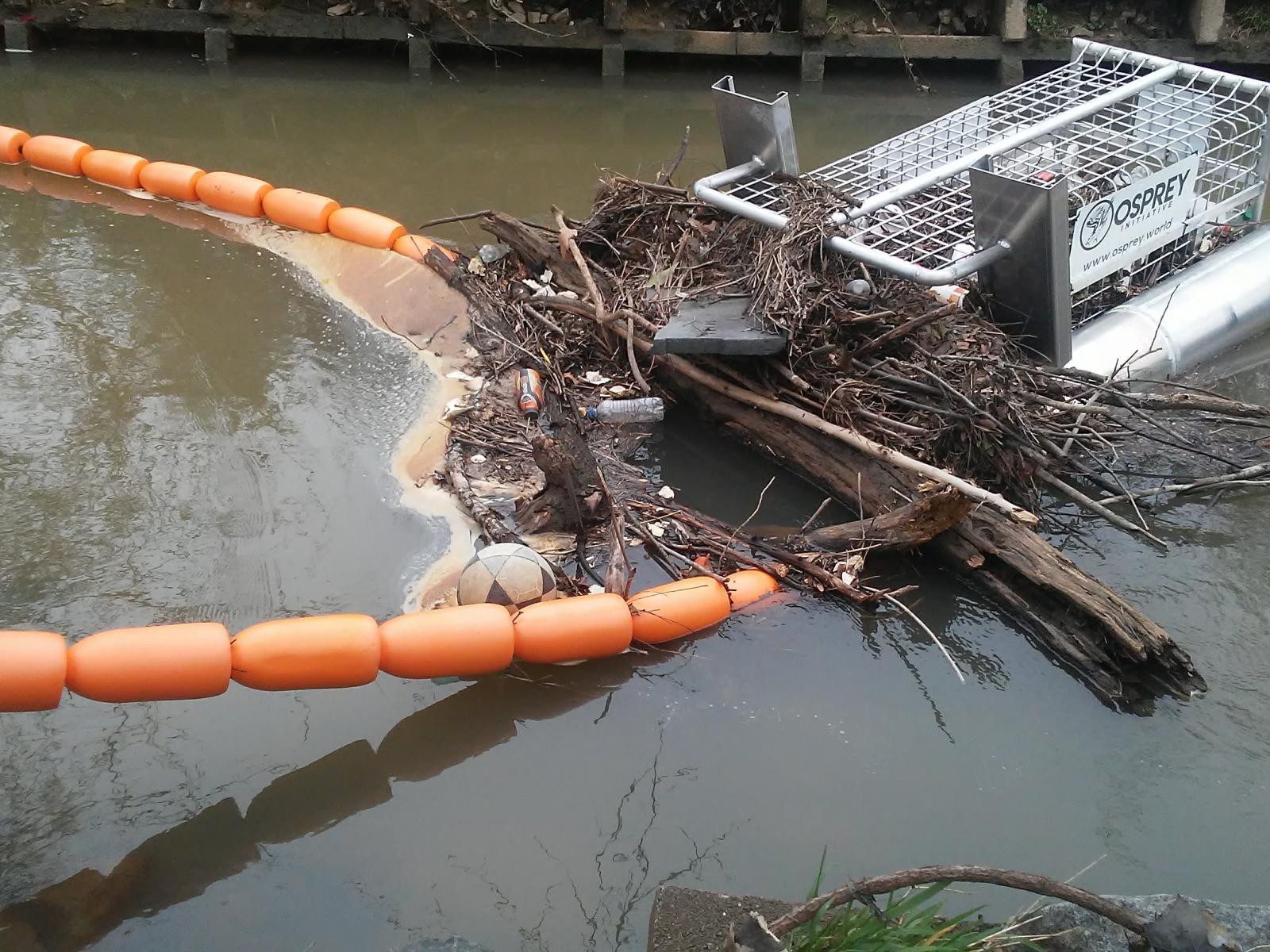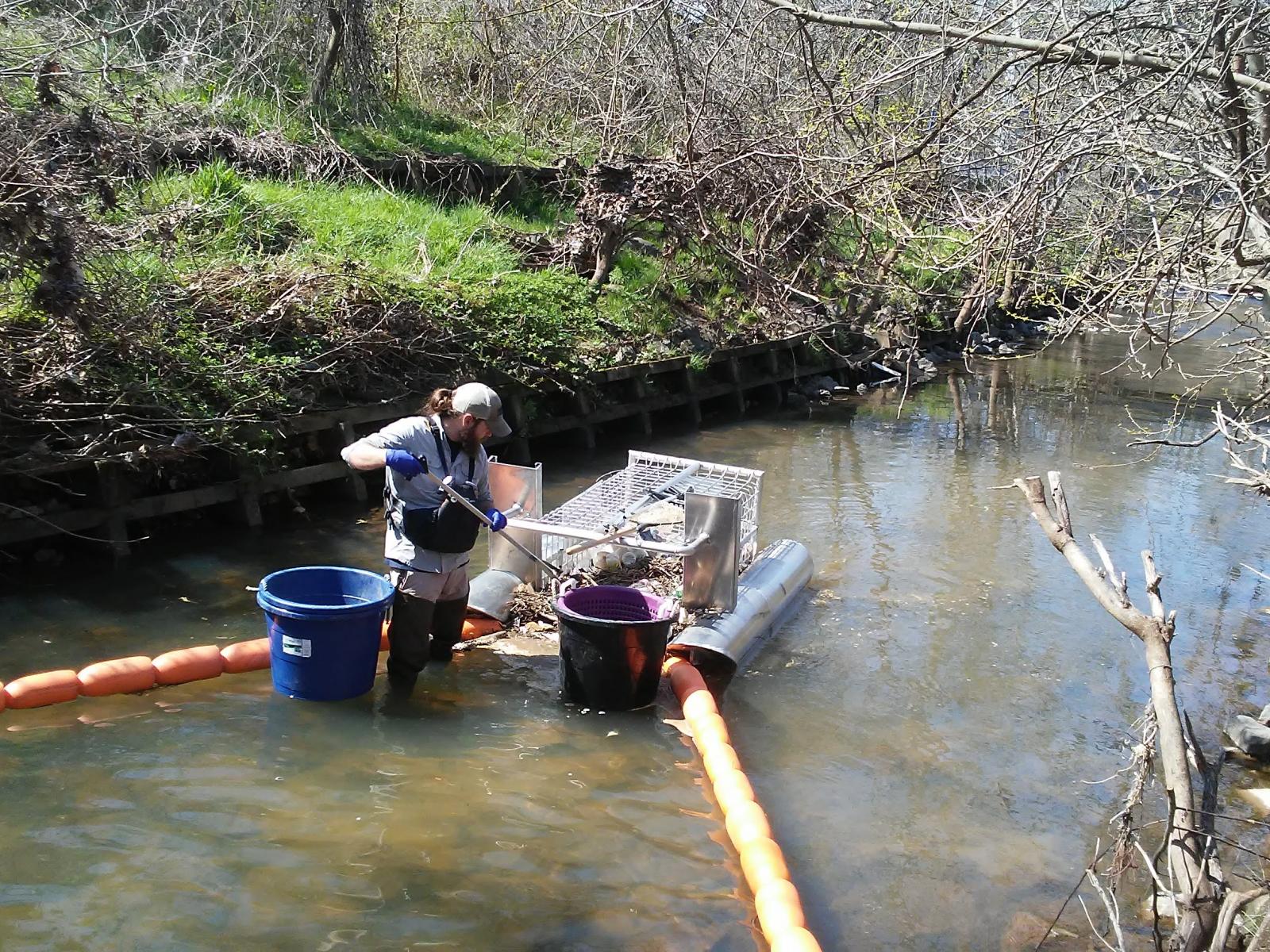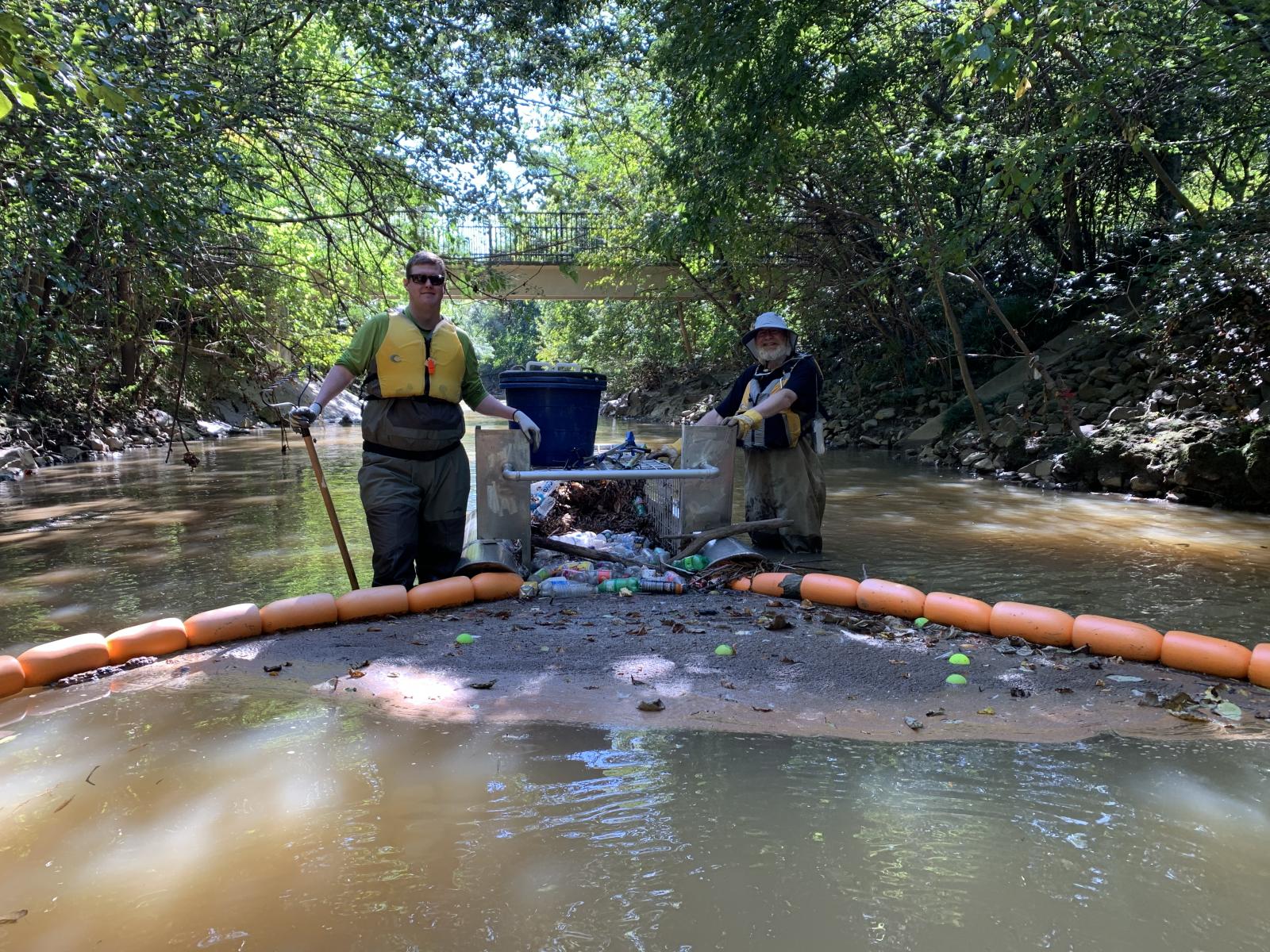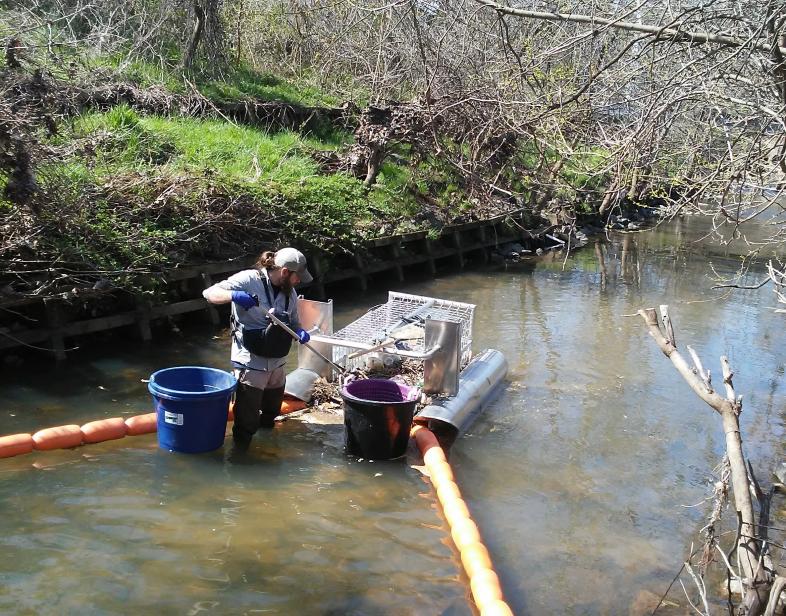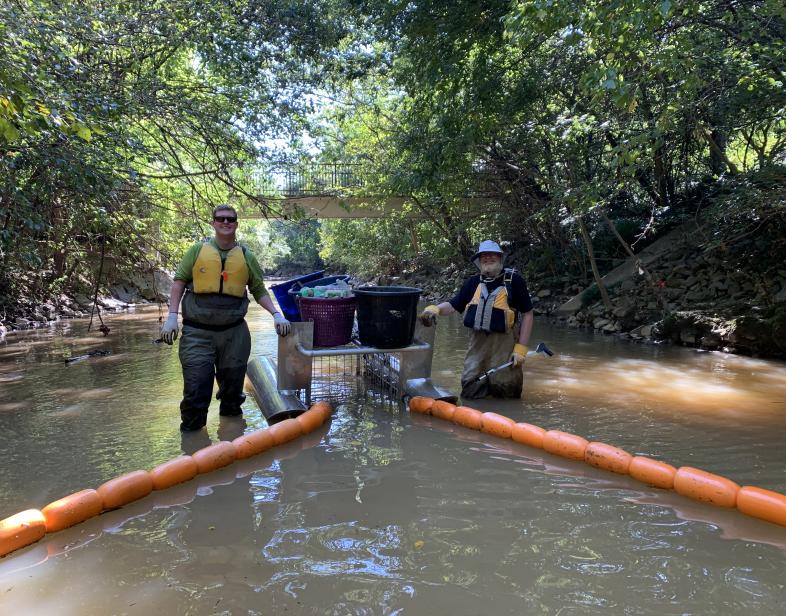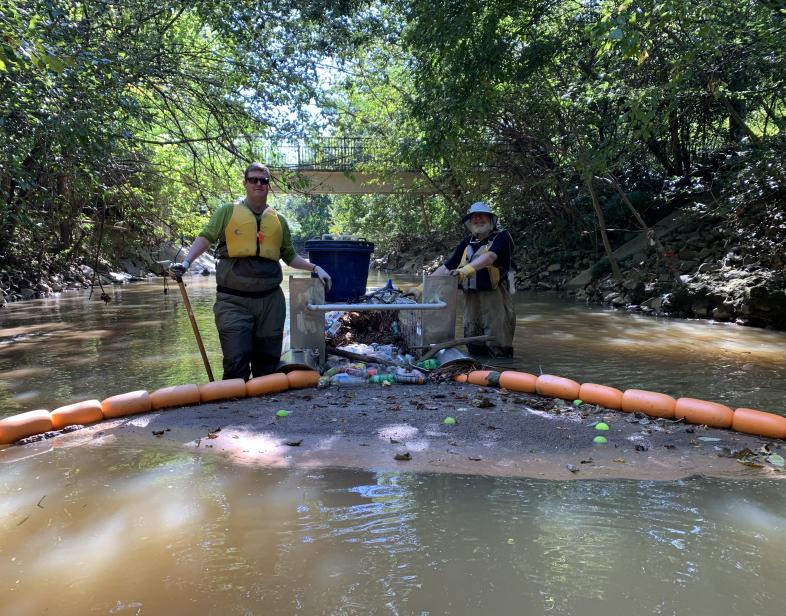An Overview Of Our Solution
The Litter Gitter Program is in partnership with Osprey Initiative and provides an ambient solution to trash collection on creeks and streams. The devices themselves are designed and manufactured by Osprey Initiative and the Catawba Riverkeeper team is responsible for maintaining the devices, removing the trash from them when they are full, separating trash into various types, cataloging the types of trash, and taking trash to recycling center and waste collection centers. Additionally, our team conducts a thorough clean-up of the area a few hundred yards up and downstream of each device each time we clean them out. In just 9 months of piloting this program with 3 devices in Charlotte, NC we have collected over 6,000 lbs of trash and recycled nearly half of it.
- Population Impacted: 2,000,000
- Continent: North America
Nama depan
nama keluarga
Tipe organisasi
Surel
Analisis Konteks
Over 2 million people live in the Charlotte region and it is the 5th fastest growing metro area in the United States. The massive growth that the area has experienced over the past decade has led to the increase in impervious surface in the metro region by more than 60%. This rapid urbanization has created a major strain on the creeks and streams running through the area that serve as the receiver of stormwater run-off from the city.
While our organization conducts dozens of volunteer clean-ups a year and the county has a robust Adopt a Stream program, we were seeing a need for a more constant littler collection system for our urban creeks and streams. Rainstorms in our area create incredible flashy creeks in a very short period of time on a consistent basis in the spring and fall so we knew that a traditional collection net or other similar device would not suffice.
In partnership with Osprey Initiative, the development of the Litter Gitter provides a robust solution.
Jelaskan solusi teknis yang Anda inginkan untuk diadopsi oleh audiens target
The technical solution we are trying to solve is threefold.
First, we simply want to get more trash out of our urban creeks and streams before they reach the main body of the Catawba River and her lakes which serve as drinking water reservoirs for over 2 million people.
Secondly, we wanted to track and catalog the types of litter we were collecting so that we can determine trends. This allows us to both recycle a significant amount of the litter collected and work to eliminate the most popular types of trash. For instance, when we see a large volume of styrofoam cups from a particular convenience store brand upstream, we can contact that operator about putting more trashcans in their parking lot.
Finally, we want to raise awareness in the community of the problem of litter in our waterways. Each of our pilot devices, and all future ones, will be placed in a high visibility area along a sidewalk or greenway and be accompanied by an informational sign.
Jelaskan intervensi perilaku Anda.
The signage at each of our three pilot locations has attracted a lot of attention. We've have 3 local news stories done about the program and have received many emails and phone calls inquiring about the program and how citizens can help. This has led to the largest volume of volunteers for our clean-up days in our organization's 23 year history.
One of the unique things about these devices is that our crew cleans them out and sorts the trash from them on a regular basis. Because they are located in high traffic areas, this creates and opportunity to talk to people passing by about what we are doing. We educate our crew about the program so that they can share with the community.
Most importantly, we've been getting inquiries from other municipalities, neighborhood groups, schools, and developments who want to know how they can get a Litter Gitter in their area creek or stream. These inquiries give us the opportunity to talk about the program and we hope to expand it across the region in 2021.
Pengungkit Perilaku Digunakan
Jika diperlukan, jelaskan bagaimana Anda menggunakan tuas secara lebih rinci.
As stated above, we pull the informational lever with signage at the site as well as with making sure our crew members are informed about the program and can share with others. The opportunities we've had to be interviewed on camera to share the story has also been an important informational lever.
Social influences come into play when residents see their fellow residents in the water, in their waders, pulling trash out of the Litter Gitter. It is very difficult for a person who sees their fellow human having to pick up after them to then go and throw their trash on the ground or in the creek.
Our emotional appeals have come in the form of social media posts, email blasts, and print newsletter articles about the program. We have encouraged folks to come out for stream clean-ups and used the results of the Litter Gitter Program as evidence that we need the community's help to get things cleaned up.
Jelaskan implementasi Anda
The Litter Gitter Program started as a pilot program with 3 sites in Charlotte's urban core. In cooperation with the county's stormwater services and parks and recreation program, we selected high traffic, high visibility areas along the greenway and in city parks that we knew would garner attention from residents and the media. Additionally, we selected locations where we knew from our experience in cleaning up those areas that there was a trash problems there and the devices would be put to good use. Once the locations were selected, we worked with Osprey Initiative to develop devices that could be safely attached to the shoreline and could withstand the high water situations we encounter during flood events. Throughout the pilot program, we have tweaked and adjusted the design when we had failures and recently the devices withstood the 10th largest flooding event in the history of the region without damage.
The key success factor of this program has been the partnerships. The willingness for the county and parks and rec to be involved was crucial to getting the correct sites. Our local Coca-Cola bottler provided the seed money for the construction of the devices and funded the pilot program staffing, equipment, and mileage. Osprey Initiative has been an incredible engineering partner in the project and was very willing to adapt and adjust the design to best meet the needs of our creeks. We've also involved several other non-profit partners for recycling, transportation, and staffing support.
We have been very encouraged by the success of this program and we look forward to serving other communities with the program in 2021.
Jelaskan kepemimpinan untuk solusi Anda. Siapa yang memimpin pelaksanaannya?
The Litter Gitter program in Charlotte is lead by Greg Nance, the Engagement Manager of Catawba Riverkeeper. While each of the government, for profit, and non-profit partners listed above also has a key leader in the partnership, Greg is responsible for the installation, maintenance, and cleaning of the devices. Greg leads a team of more than 30 hourly employees and volunteers that deploy several times a month to the three locations to clean out the devices, clean up the area around them, catalog the trash that comes out, and separate them for recycling. This group of crew members includes people of all walks of life and age groups as well as many different ethnic and racial backgrounds. To date, they have worked more than 400 hours on this program.
Bagikan beberapa mitra atau pemangku kepentingan utama yang terlibat dalam pengembangan dan implementasi solusi Anda.
As outlined above, the key partners include:
Charlotte-Mecklenburg Stormwater Services
Charlotte-Mecklenburg Parks and Rec
Charlotte-Mecklenburg Waste Management
Osprey Initiative
Coca-Cola Consolidated
Envision Partners (non-profit)
Carolina Thread Trail (non-profit)
She Built This City (non-profit)
Charlotte Toolbank (non-profit)
Without all of these partners, this program would not be possible.
Siapa yang mengadopsi perilaku yang diinginkan dan sejauh mana? Sertakan penjelasan tentang bagaimana Anda mengukur perubahan pe
During this pilot program, the "controlling body" that adopted the Litter Gitters was Charlotte-Mecklenburg Stormwater Services. This group manages the stormwater needs of the entire county, accounting for more than 2 million residents.
Additionally, thousands of Charlotte area residents and visitors have walked, biked, run, or strolled past a Litter Gitter device and had an opportunity to learn about the program with an informational sign or a conversation with a crew member.
Bagaimana dampak pencemaran air? Harap spesifik dan sertakan metodologi pengukuran jika relevan.
During first 9 months of the pilot program, the three Litter Gitter devices have captured over 6,000 lbs of trash. Additionally, the crew members have collected another 2,000 lbs of trash from the surrounding areas.
More than 40% of the collected trash has been plastics and nearly half of it has been recyclable material.
Eliminating this volume of trash from our urban waterways has ensured that it will not reach our basin's lakes which serve as drinking water reservoirs for more than 2 million people. Trash can clog water intakes leading to costly damages and also can break down into microplastics that reach our drinking water undetected and are not generally filtered out during the water treatment process.
Bagaimana solusi Anda berdampak pada tantangan kesetaraan (termasuk ras, jenis kelamin, etnis, kelas/pendapatan sosial, atau lai
The vast majority of our crew members are paid on an hourly basis. Many of these crew members work in the service industries and many are racially or socio-economically disadvantaged. This program has given those crew members not only a source of income, but also a sense of pride that they are helping keep their community clean!
Apa saja manfaat tambahan sosial dan/atau komunitas?
The most obvious is cleaner creeks, streams, parks, and greenways. The lack of trash in these public areas creates a sense of pride amongst the community that leads residents to take better care of their public spaces themselves.
Apa sajakah manfaat tambahan lingkungan?
One of the key environmental co-benefits was having our staff in the water more. During the first 9 months of the program, members of our crew or leadership team working on site have discovered and reported three different instances of other pollutants being illegally discharged into the creeks.
One instance was a diesel fuel spill coming from a generator on a construction site that had been left unattended. Another was a silt fence failure from a construction site and a third was an oil leak.
Apa sajakah manfaat tambahan dari pembangunan berkelanjutan?
We believe that this program could become a standard operating procedure in our region's municipalities. If this happens, fees to install and maintain these could be included in the cost of permits to develop along any creek or stream in our basin, making them essentially free to the tax payers.
Keberlanjutan: Jelaskan keberlanjutan ekonomi dari solusi Anda.
The cost of construction, installation, and first year's maintenance for these devices is $25,000 each. After the first year, the cost of maintenance and cleaning goes down to around $15,000 per year. The more devices we have the more cost effective each one becomes as we can build out efficiences in our systems and move to more of a full time staffing model. Funding can come from municipalities themselves, grants, or corporate partners.
In our ideal model, a corporate partner would provide a "bank" of funds that could be used as matching funds for municipalities to get the devices installed and get the program running in year one with the municipality taking responsibility for the maintenance cost after year one.
Pengembalian investasi: Berapa biaya untuk melaksanakan kegiatan ini? Bagaimana hasil Anda di atas dibandingkan dengan investasi
Through the generosity of Coca-Cola Consolidated, we did not expend anything out of pocket on this program other than staff time. The pilot program funding for the three devices was $100,000.
Bagaimana kita bisa berhasil mereplikasi solusi ini di tempat lain?
We believe that a "bank" of funds seeded by corporate or foundation funds could be doubled through a matching grant program offered to municipalities. We estimate that in order to scale this to all of the communities in our river basin that operate under a federal EPA MS4 Stormwater Permit to have a suitable number of Litter Gitters in their creeks and streams that an intial grant bank fund of $500,000 would be needed. We would approach each relevant community and offer them a matching grant for the installation and first year's maintenance of the appropriate number of Litter Gitters for their community. For example, if a community was judged by us to need 5 devices to capture the majority of their major creeks, they would contribute $62,500 and the grant fund would match that contribution for the purchase, installation, and first year's maintenance of the 5 devices. After year one, the municipality would be responsible for the ongoing maintenance and clean out or pay to have it done.
